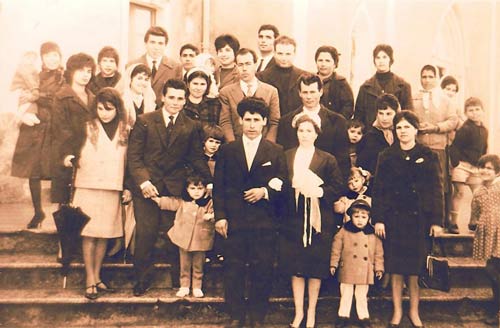In the past, for the young, it was not simple, during the engagement, to know each other and to see one another because of the excessive severity of the parents and because of the rules that they had to respect.
The elderly of our village have told that, during their youth (around 1930), the possibility of meeting were limited to the dances organized in the houses o during the feasts of the village. When two young were sure of their feelings, they had to involve their families and ask their approval to see each other. Usually, the parents of the boy went to the girl’s home and, underlining the good intention of their son, they asked girl’s hand in marriage.
The girl’s parent took some days to think and listened to the motivations of their daughter. Then they convened again the parents of the boy and gave their answer. If there were consent to the engagement, it was made official with the Sunday going out of the two young for the sung mass.
During the engagement, anyway, the fiancés had not the possibility to go out by themselves, except on Sunday morning for going to the mass. In the other circumstances they were always accompanied by someone, usually, it was the task of the smallest brother of the girl.
During the engagement, the fiancés started the preparations for the marriage. The boy started building the house while the girl looked after the linen and the furniture, except the bed, that traditionally had to be taken by the man.
When the preparations were finished (rarely people got married without house) the date of the marriage was fixed. The first step happened at the town council by “sa compatta”. The religious ceremony was very serious and solemn and usually it was celebrated on Saturday morning. Often the wedding rings were lent because of the strained circumstances. The woman did not worn the white dress (it started to be used after the world war), but she worn a black veil, completely embroidered with coloured flowers.
Before the ceremony, they did a procession with the furniture: a wagon was decorated to transport the furniture from the girl’s home to the new house.
At the departure, the girl’s mom did “sa arazzia” (it is a particular custom, symbol of good omen: a plate was filled with rice, wheat and flowers’ petals and, after having said a prayer, it was broken on the floor). When they arrived at the new house, the boy’s mom did again this ritual.
The well-off families often accompanied the procession with music. After the ceremony, they went to celebrate. A lunch with the relatives was done and everything was prepared in house, the pasta (fregua groga), the bread and the desserts. The party continued with dances and songs.



